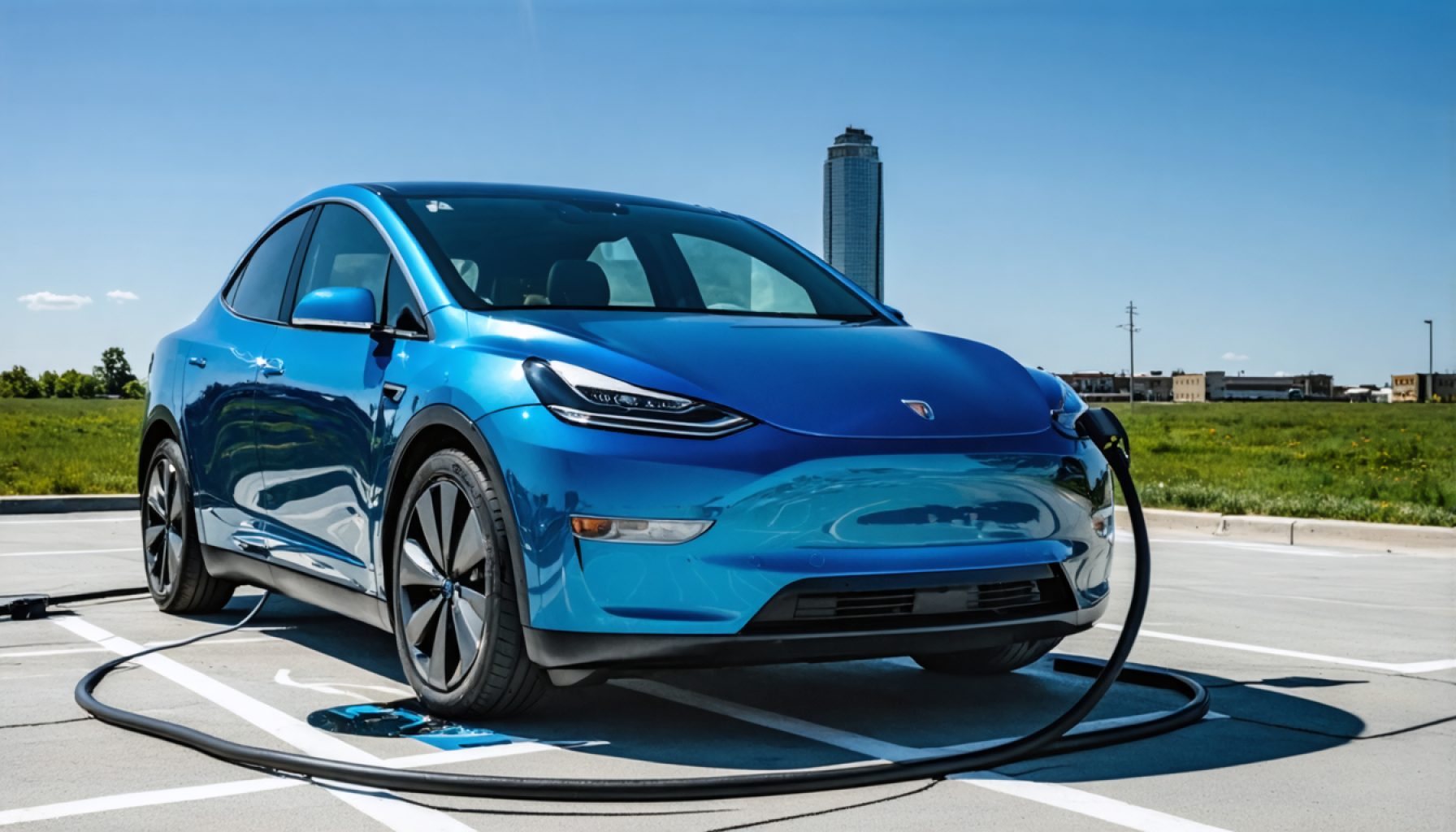- Illinois experiences a significant rise in electric vehicle (EV) registrations, with a 50% increase compared to last year.
- State incentives, including a $4,000 rebate for new EV purchases and $1,500 for electric motorcycles, fuel the growth.
- ComEd, Illinois’ major utility provider, supports the surge with a $90 million incentive package, benefiting businesses and public sectors.
- Commercial Class 3-6 EVs receive rebates up to $30,000, promoting sustainable logistics.
- The state’s strategy serves as a model, showcasing how policy and innovation can drive environmental and consumer shifts.
The streets of Illinois are transforming. With the quiet hum of electric vehicles (EVs) weaving through its cities, the state is witnessing a remarkable uptick in EV registrations, a revolution ignited by strategic incentives and forward-thinking policies. In just three short months, nearly 10,000 new electric vehicles have found homes in Illinois, marking more than a 50% surge compared to the same period last year—a stark contrast to the 12% national increase.
This EV renaissance in Illinois stems from a powerful combination of state incentives and utility-driven initiatives. Governor JB Pritzker has been at the forefront, orchestrating a $4,000 rebate for every new electric car purchase and up to $1,500 for electric motorcycles. This bold move, positioned as a countermove to the uncertainties surrounding federal tax credits, has infused the state’s roads with a fresh fleet of climate-friendly transport.
But it’s not just the state’s leadership energizing this surge; Commonwealth Edison (ComEd), Illinois’ major utility provider, has created a robust $90 million incentive package. This includes the innovative Point of Purchase initiative, delivering instant savings to businesses and public sector customers who join the electric tide. Commercial vehicles are benefitting particularly well; Class 3-6 EVs now come with up to $30,000 in rebates, encouraging a major shift toward greener logistics.
This surge in electric transportation reflects a broader narrative—a growing acknowledgment of the necessity to curb emissions and invest in sustainable futures. Illinois, with its proactive stance, offers a compelling case study of how well-crafted incentives can fuel significant shifts in consumer behavior and industry standards.
As the sun sets over the Chicago skyline, glinting off the rooftops of a steadily growing fleet of EVs, the state of Illinois stands as a model for others to emulate. The message is clear and resonates with a hopeful certainty: when government policy aligns with technological innovation, profound change is not just possible—it’s inevitable.
Why Illinois is Leading the Electric Vehicle Revolution: Key Insights for a Greener Future
The Rise of Electric Vehicles in Illinois
Illinois is rapidly becoming a hotspot for electric vehicles (EVs), outpacing the national average for EV adoption. In just three short months, the state has seen nearly 10,000 new EV registrations, marking a significant 50% increase over the previous year. This is far ahead of the 12% increase nationally, showcasing Illinois as a trailblazer in the transition towards sustainable transportation.
Government and Utility-Driven Initiatives
State Incentives
Governor JB Pritzker’s administration has implemented substantial incentives to promote EV adoption, including:
– A $4,000 rebate on the purchase of new electric cars.
– $1,500 rebates for electric motorcycles.
These incentives aim to mitigate concerns about fluctuating federal tax credits and have significantly boosted consumer interest in the state.
ComEd’s Contributions
Commonwealth Edison (ComEd), a principal utility provider in Illinois, has contributed by introducing a $90 million incentive package. Notably:
– The Point of Purchase initiative provides instant savings for businesses and the public sector.
– Rebates up to $30,000 for Class 3-6 EVs, encouraging green logistics for commercial fleets.
The Broader Impact and Future Prospects
Real-World Use Cases
1. Public Transport and Logistical Shifts: With substantial rebates, public transport systems and logistics companies are incorporating EVs, reducing emissions and operational costs.
2. Residential Adoption: Homeowners are increasingly installing EV charging stations, supported by incentives, enhancing home value and convenience.
Market Forecasts & Industry Trends
– Increased Charging Infrastructure: The surge in EVs will necessitate expanded charging networks, a trend substantiated by investments from both private companies and public sectors.
– Local Manufacturing Boom: Increased demand may boost local manufacturing of EV components, bringing more jobs to Illinois.
Addressing Reader Concerns
Pros & Cons Overview
Pros:
– Significant cost savings from rebates.
– Reduced carbon footprint and long-term environmental benefits.
– Enhanced energy independence and reduced reliance on fossil fuels.
Cons:
– Initial cost of EVs can still be a barrier for some consumers.
– Charging infrastructure, while growing, may not meet immediate demand.
Controversies & Limitations
– Infrastructure Development: There is ongoing debate about the speed and equity of charging infrastructure development, especially in rural versus urban areas.
– Battery Production and Disposal: Environmental concerns about battery production and disposal persist, necessitating ongoing research and development.
Actionable Recommendations
1. Evaluate Finances: Consider the long-term savings of an EV, including reduced fuel and maintenance costs.
2. Explore Incentives: Check eligibility for state and utility rebates to reduce upfront costs.
3. Plan Charging Solutions: Investigate home charging station installations and nearby public charging points.
Final Thoughts
Illinois’ approach signifies how government policy harmonized with technological advancement can swiftly metamorphose the landscape of transportation. As other states observe and learn from Illinois’ experiences, the electrified path forward becomes more attainable for the nation.
For more information on the exciting developments in Illinois’ EV transformation, visit the state’s official platform: Illinois Government.
